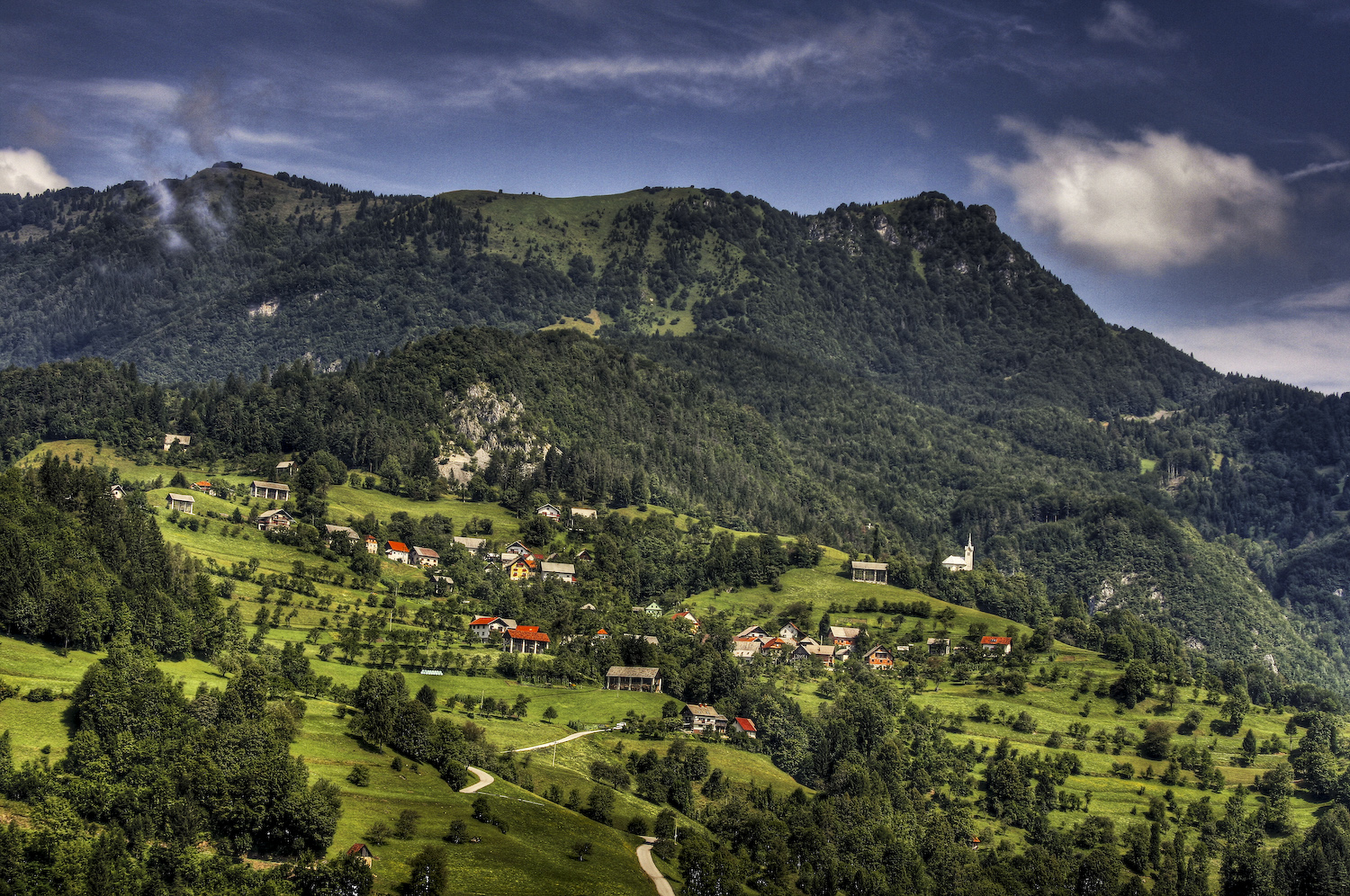|
Mount Porezen
Mount Porezen is a mountain of the outlying Alps located in Slovenia. It is the highest summit of the Slovenian Prealps. Geography The mountain belongs to the Gorizia Statistical Region. Access to the summit The suggested route for the mountain starts from Cerkno and climbs though Poce, following a marked footpath to the footpath. There are also popular routes from Davča and Petrovo Brdo Petrovo Brdo () is a village in the Municipality of Tolmin in the Littoral region of Slovenia on the border with the Upper Carniola region. It lies on the road just below a pass that connects the two regions, on the drainage divide between the B .... Maps * ''Idrijsko in Cerkljansko'' (1:50,000 scale) and ''Škofjeloško in Cerkljansko hribovje'' (1:50,000 scale). References External links * {{DEFAULTSORT:Porezen Cerkno Hills One-thousanders of Slovenia Mountains of the Alps Mountains of the Slovene Littoral Mountains of Upper Carniola Natura 2000 in Slovenia ... [...More Info...] [...Related Items...] OR: [Wikipedia] [Google] [Baidu] |
Soriška Planina Ski Resort
Soriška Planina Ski Resort is a family Slovenian ski resort located in municipality of Železniki. Closest city is Kranj and 60 km away from Ljubljana Ljubljana (also known by other historical names) is the capital and largest city of Slovenia. It is the country's cultural, educational, economic, political and administrative center. During antiquity, a Roman city called Emona stood in the are .... Resort offers has 6 km of ski slopes (slalom, giantslalom and downhill slope,...) and 5 km of cross-country skiing tracks. There is also a natural sledding slope and one sledding slope for competitions. You can be hiking in summer. Resort statistics Elevation Summit - 1600 m / 5,084 ft Base - 1000 m / 4,287 ft Ski Terrain 0,25 km2 (62 acres) - covering of ski slopes on one mountain. Slope Difficulty -expert (1 km) -intermediate (2 km) -beginner (3 km) Vertical Drop - 157 m / (515 ft) in total Longest Run: 1,64 km Ave ... [...More Info...] [...Related Items...] OR: [Wikipedia] [Google] [Baidu] |
Gorizia Statistical Region
The Gorizia Statistical Region ( sl, Goriška statistična regija) is a statistical region in western Slovenia, along the border with Italy. It is named after the Italian town of Gorizia (the feminine adjective ''goriška'' comes from the Slovenian name for Gorizia: ''Gorica''). The Julian Alps, the Soča River, and the Vipava Valley are the most prominent natural features of this region. It contributed just over 5% to total national GDP in 2012, but in terms of GDP per capita it ranked fourth in the country. In the same year, disposable income per capita in the region the highest, in second place behind the Central Slovenia Statistical Region. Housing stock estimates indicate that at the end of 2013 the region had the highest share of dwellings with three or more rooms (around 70%). The share of single-room dwellings was less than 10%. Dwellings here are larger than the Slovenian average, with 37 m² of usable floor space per person on average. The number of cars per 1,000 popul ... [...More Info...] [...Related Items...] OR: [Wikipedia] [Google] [Baidu] |
Slovenia
Slovenia ( ; sl, Slovenija ), officially the Republic of Slovenia (Slovene: , abbr.: ''RS''), is a country in Central Europe. It is bordered by Italy to the west, Austria to the north, Hungary to the northeast, Croatia to the southeast, and the Adriatic Sea to the southwest. Slovenia is mostly mountainous and forested, covers , and has a population of 2.1 million (2,108,708 people). Slovenes constitute over 80% of the country's population. Slovene, a South Slavic language, is the official language. Slovenia has a predominantly temperate continental climate, with the exception of the Slovene Littoral and the Julian Alps. A sub-mediterranean climate reaches to the northern extensions of the Dinaric Alps that traverse the country in a northwest–southeast direction. The Julian Alps in the northwest have an alpine climate. Toward the northeastern Pannonian Basin, a continental climate is more pronounced. Ljubljana, the capital and largest city of Slovenia, is geogr ... [...More Info...] [...Related Items...] OR: [Wikipedia] [Google] [Baidu] |
Slovenian Prealps
The Slovene Prealps or the Slovenian Prealps ( sl, Slovenske Predalpe, , ) are a group of mountain ranges in the eastern part of the Alps. They are located in Slovenia and, for a small part of their northernmost area, in Austria. Geography SOIUSA classification According to SOIUSA (''International Standardized Mountain Subdivision of the Alps'') the Slovene Prealps are an Alpine section, classified in the following way: * main part = Eastern Alps * major sector = Southern Limestone Alps * section = Slovene Prealps * code = II/C-36 Subdivision The Slovene Prealps are divided into three non-contiguous subsections: * Western Slovene Prealps ( Sl: ''Zahodne Slovenske Predalpe'') - SOIUSA code:II/C-36.I * Eastern Slovene Prealps ( Sl: ''Vzhodne Slovenske Predalpe'') - SOIUSA code:II/C-36.II * Northeastern Slovene Prealps ( Sl: ''Severovzhodne Slovenske Predalpe'') - SOIUSA code:II/C-36.III Two of these subsections include just one Alpine supergroup, and the third one is furthe ... [...More Info...] [...Related Items...] OR: [Wikipedia] [Google] [Baidu] |
Cerkno
Cerkno (; it, Circhina; ger, Kirchheim) is a small town in the Littoral region of Slovenia. It has around 2,000 inhabitants and is the administrative centre of the Cerkno Hills. It is the seat of the Municipality of Cerkno. Cerkno is a small but important local cultural center in the traditional Littoral region near Idrija. It is known for the '' Laufarija'' carnival, a spring festival with carved wooden masks; for Franja Partisan Hospital (''Partizanska bolnica Franja''); for a Partisan hospital from World War II; and as a ski resort. Name Cerkno was attested in written records in 1257 as ''Curchinitz'' (and as ''Chyrchayn'' in 1299, ''Circhinç'' in 1337, and ''Circhiniz'' in 1486). The modern Slovene name is an ellipsis of ''*Cerьkъvьno (selo/polje)''; literally, 'church (village/field)'. The medieval attestations of the name indicate that the settlement was also once called ''Cerknica''. The name indicates that the place was formerly a church property. History Historica ... [...More Info...] [...Related Items...] OR: [Wikipedia] [Google] [Baidu] |
Alps
The Alps () ; german: Alpen ; it, Alpi ; rm, Alps ; sl, Alpe . are the highest and most extensive mountain range system that lies entirely in Europe, stretching approximately across seven Alpine countries (from west to east): France, Switzerland, Italy, Liechtenstein, Austria, Germany, and Slovenia. The Alpine arch generally extends from Nice on the western Mediterranean to Trieste on the Adriatic and Vienna at the beginning of the Pannonian Basin. The mountains were formed over tens of millions of years as the African and Eurasian tectonic plates collided. Extreme shortening caused by the event resulted in marine sedimentary rocks rising by thrusting and folding into high mountain peaks such as Mont Blanc and the Matterhorn. Mont Blanc spans the French–Italian border, and at is the highest mountain in the Alps. The Alpine region area contains 128 peaks higher than . The altitude and size of the range affect the climate in Europe; in the mountains, precipitation ... [...More Info...] [...Related Items...] OR: [Wikipedia] [Google] [Baidu] |
Petrovo Brdo
Petrovo Brdo () is a village in the Municipality of Tolmin in the Littoral region of Slovenia on the border with the Upper Carniola region. It lies on the road just below a pass that connects the two regions, on the drainage divide between the Bača River, which eventually flows into the Soča, and the Sora River, a tributary of the Sava River. The road through the settlement was an important throughway in the late Middle Ages. Between the First and Second World Wars, Petrovo Brdo was on the border between the Kingdom of Italy and the Kingdom of Yugoslavia The Kingdom of Yugoslavia ( sh-Latn-Cyrl, separator=" / ", Kraljevina Jugoslavija, Краљевина Југославија; sl, Kraljevina Jugoslavija) was a state in Southeast and Central Europe that existed from 1918 until 1941. From 1918 ... and large border barracks were built there by the Italians. References External links *Petrovo Brdo on Geopedia [...More Info...] [...Related Items...] OR: [Wikipedia] [Google] [Baidu] |
Cerkno Hills
The Cerkno Hills ( sl, Cerkljansko hribovje or ) is a transitional region between the Alpine and the Dinaric landscape, centered on Cerkno in northwestern Slovenia. Several passes in this area connect the Poljane Valley and the Selca Valley with the Idrijca Valley and the Soča Valley. The highest peak is Porezen (). The landscape is geologically very diverse and one of the most interesting in Slovenia in this regard. Among the steep hills, numerous ravines and valleys have been carved out by the Cerknica River and its tributaries. The Cerkno Hills and the people who live there were presented in the 2011 documentary '' The Slope to the Home'' (), directed by Dušan Moravec and edited by Jurij Moškon Jurij Moškon (born 6 March 1973) is a Slovenian film editor and photographer. He received the Vesna award, the main Slovenian recognition in the field of film. Jurij Moškon was born in Novo Mesto to mother Branka, a folklorist, and father Mar .... References External links ... [...More Info...] [...Related Items...] OR: [Wikipedia] [Google] [Baidu] |
Mountains Of The Alps
This page tabulates only the most prominent mountains of the Alps, selected for having a topographic prominence of ''at least'' , and all of them exceeding in height. Although the list contains 537 summits, some significant alpine mountains are necessarily excluded for failing to meet the stringent prominence criterion. The list of these most prominent mountains is continued down to 2500 m elevation at List of prominent mountains of the Alps (2500–2999 m) and down to 2000 m elevation on List of prominent mountains of the Alps (2000–2499 m). All such mountains are located in either France, Italy, Switzerland, Liechtenstein, Austria, Germany or Slovenia, even in some lower regions. Together, these three lists include all 44 ultra-prominent peaks of the Alps, with 19 ultras over 3000m on this page. For a definitive list of all 82 the highest peaks of the Alps, as identified by the International Climbing and Mountaineering Federation (UIAA), and often referred to as the 'Alpi ... [...More Info...] [...Related Items...] OR: [Wikipedia] [Google] [Baidu] |




